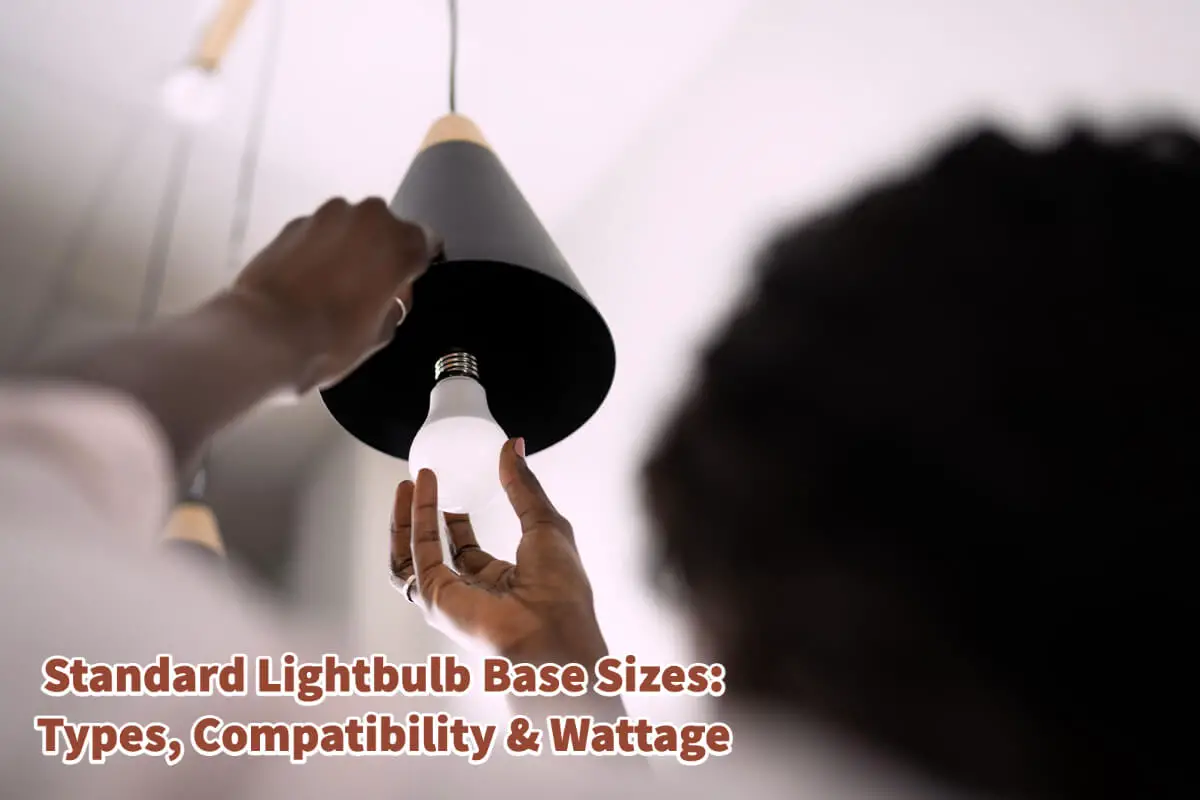Lighting is an essential aspect of any home or office space. Choosing the right lightbulb can make all the difference in creating a comfortable and functional environment.
With so many lightbulb base sizes available in the market, it can be overwhelming to know which one is right for your light fixture you should use. This is why it is crucial to understand the standard lightbulb base sizes, their types, compatibility, and wattage. Read on as we explore the UL standard base sizes and other types of bases used in different countries and regions. We will also discuss the compatibility and wattage of each base size so you can choose the right one for your fixture and ensure your lighting system’s proper functioning and safety.
Table of Contents
- Complete Guide To Standard Lightbulb Base Sizes Types
- Complete Guide To All Standard Lightbulb Base Sizes And The Wattage
- Other Lightbulb Sizes And The Wattage
- Complete Guide How To Check Standard Lightbulb Base Sizes And Compatibility
- Mondoro Can Help You Manufacture UL Standard Portables Lamps In Asia
- Frequently Asked Questions On Lightbulb Base Sizes
- Related Content
Complete Guide To Standard Lightbulb Base Sizes Types
Lightbulbs come in different shapes, sizes, and bases. Choosing the right lightbulb base size is essential for compatibility with your fixture and ensuring the correct brightness in your space.
This guide will cover all the standard lightbulb base sizes, their types, compatibility, and wattage. As we manufacture and export UL-listed portable lamps, we will mainly discuss the standard Ul lightbulbs and also talk a bit about some other sizes and what they mean. Some countries have different sizes that they use for their lamp sockets.
Lightbulb Base Sizes For UL Lamps
The UL (Underwriters Laboratories) is a global safety organization that sets product standards, including lightbulbs. The following are the standard lightbulb base sizes for UL lamps:
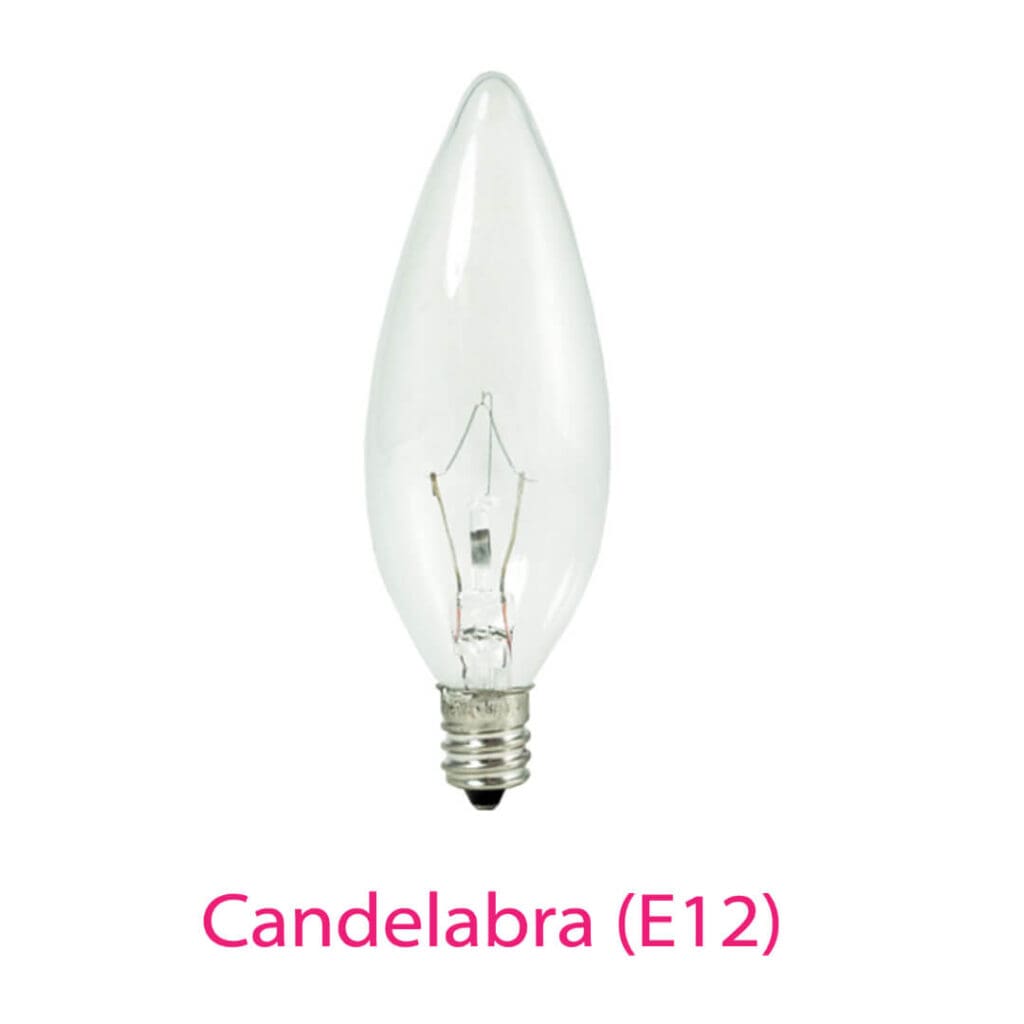
- Candelabra (E12)
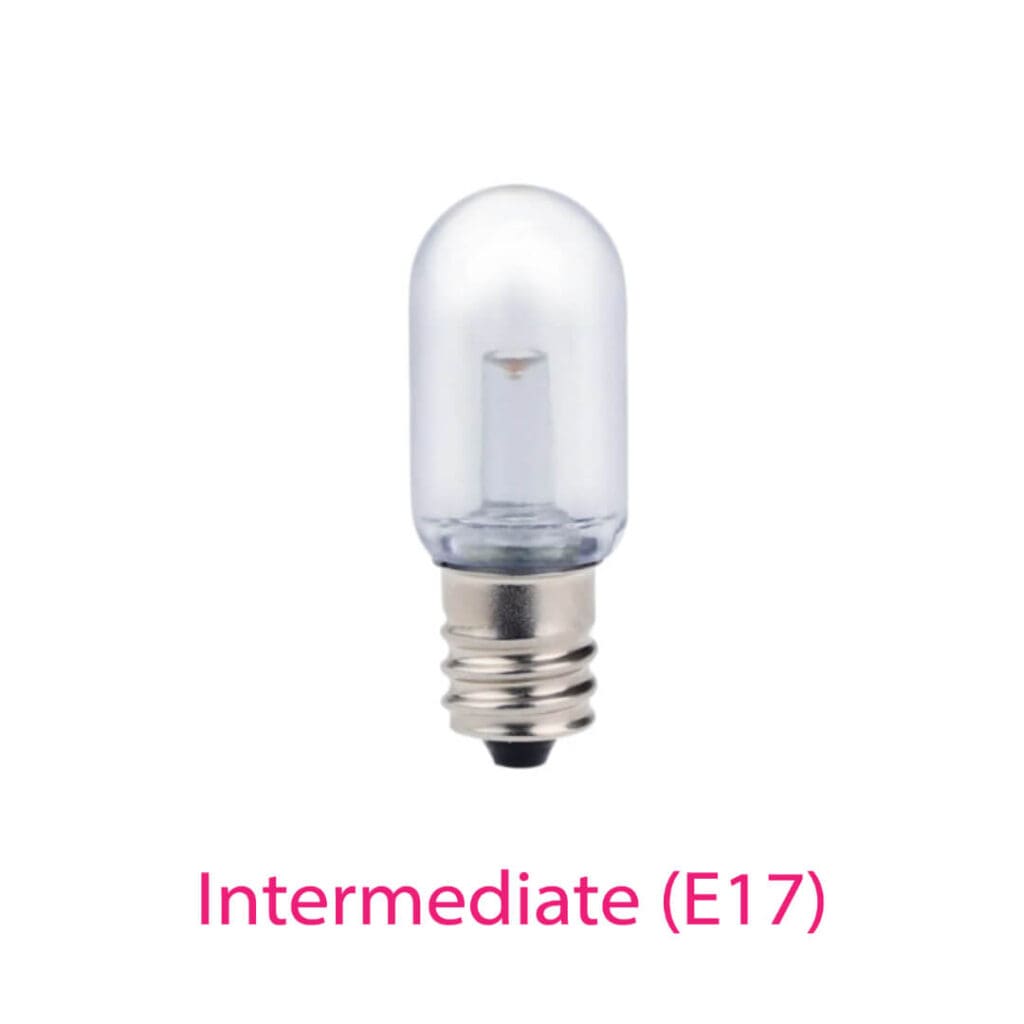
- Intermediate (E17)
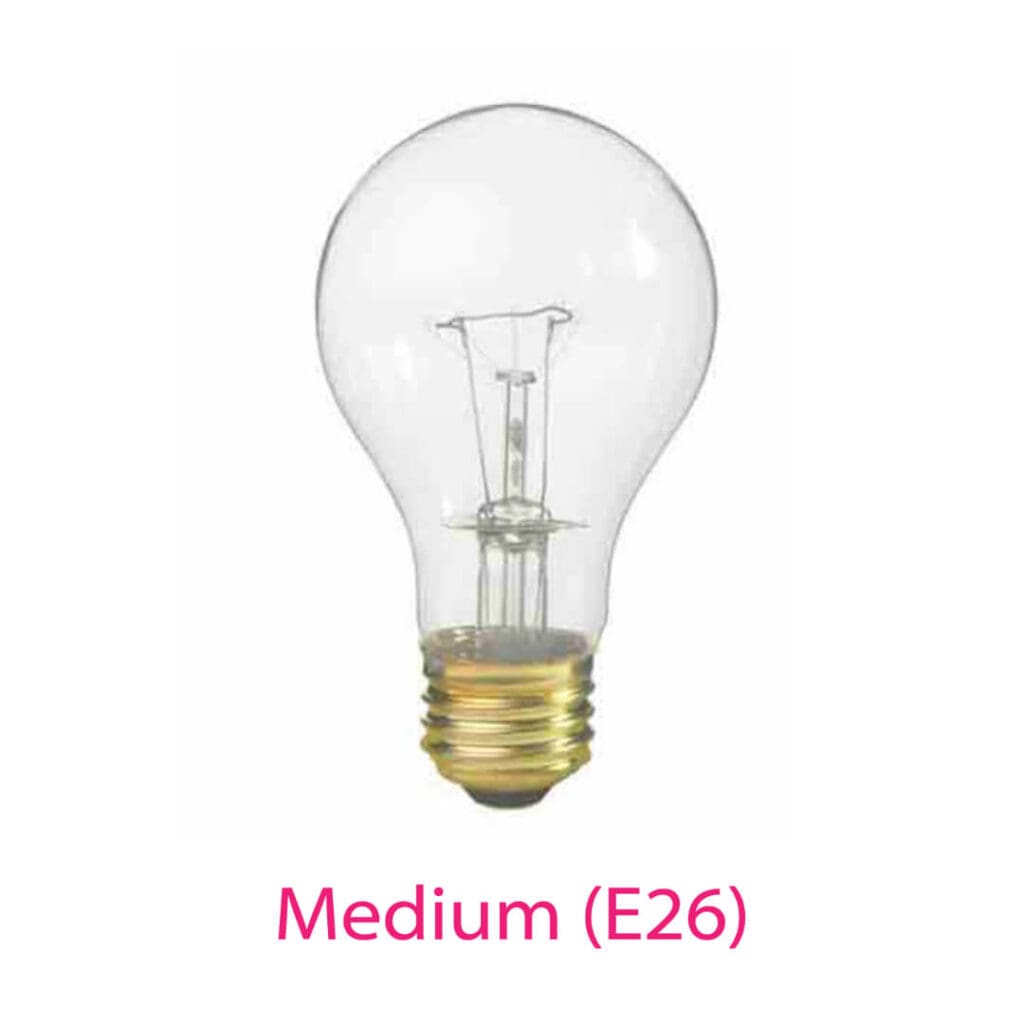
- Medium (E26)
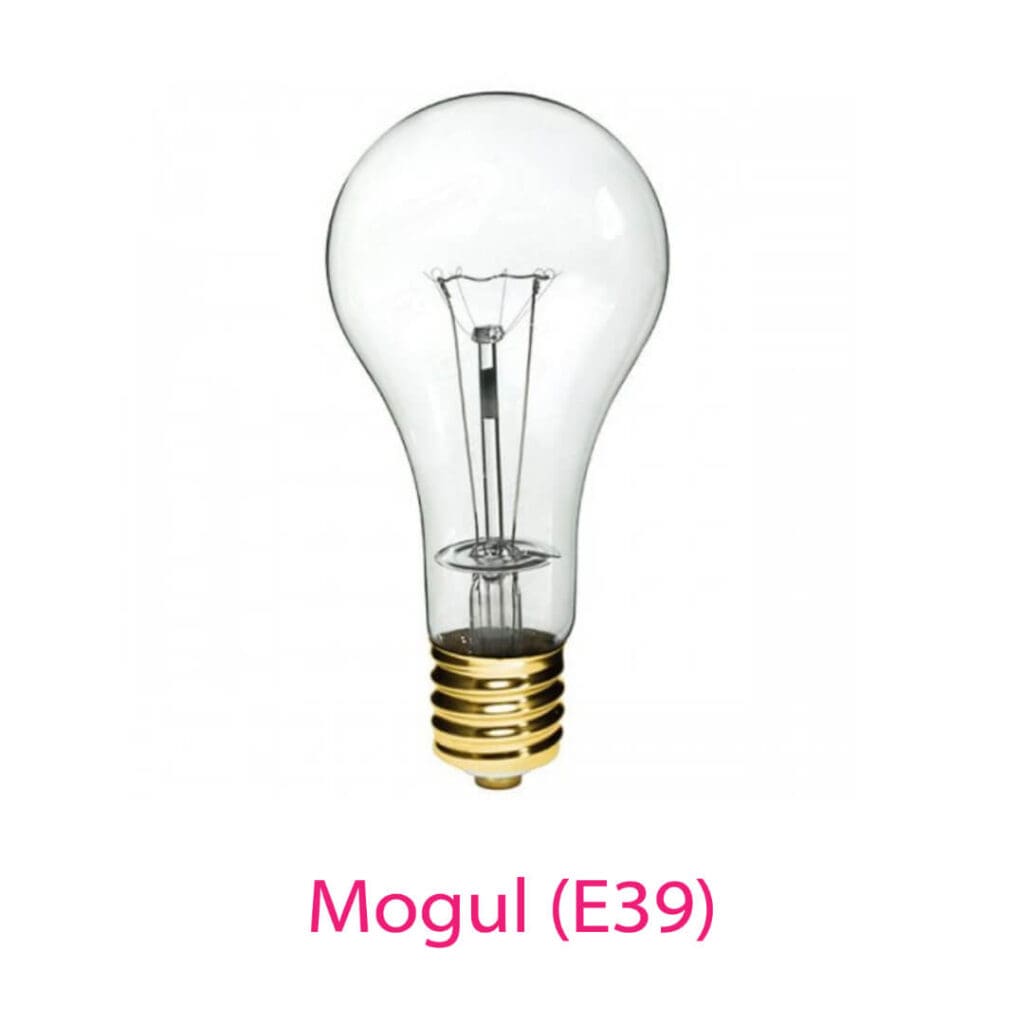
- Mogul (E39)
Other Types Of Lightbulb Bases, Including Those Used In Other Countries
Besides the standard UL lamp base sizes, other lightbulb base sizes are used in different countries and regions. Some of the other types of lightbulb base sizes include:
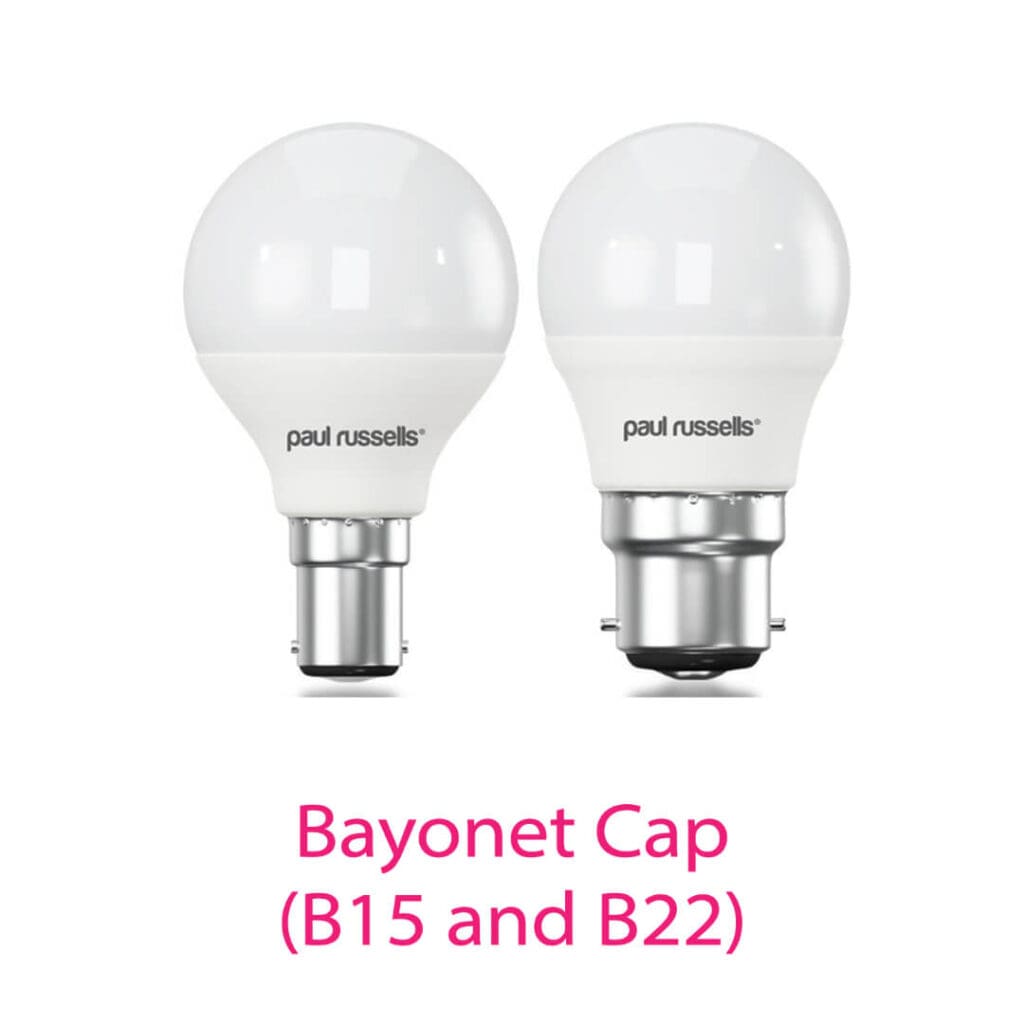
- Bayonet Cap (B22 and B15)
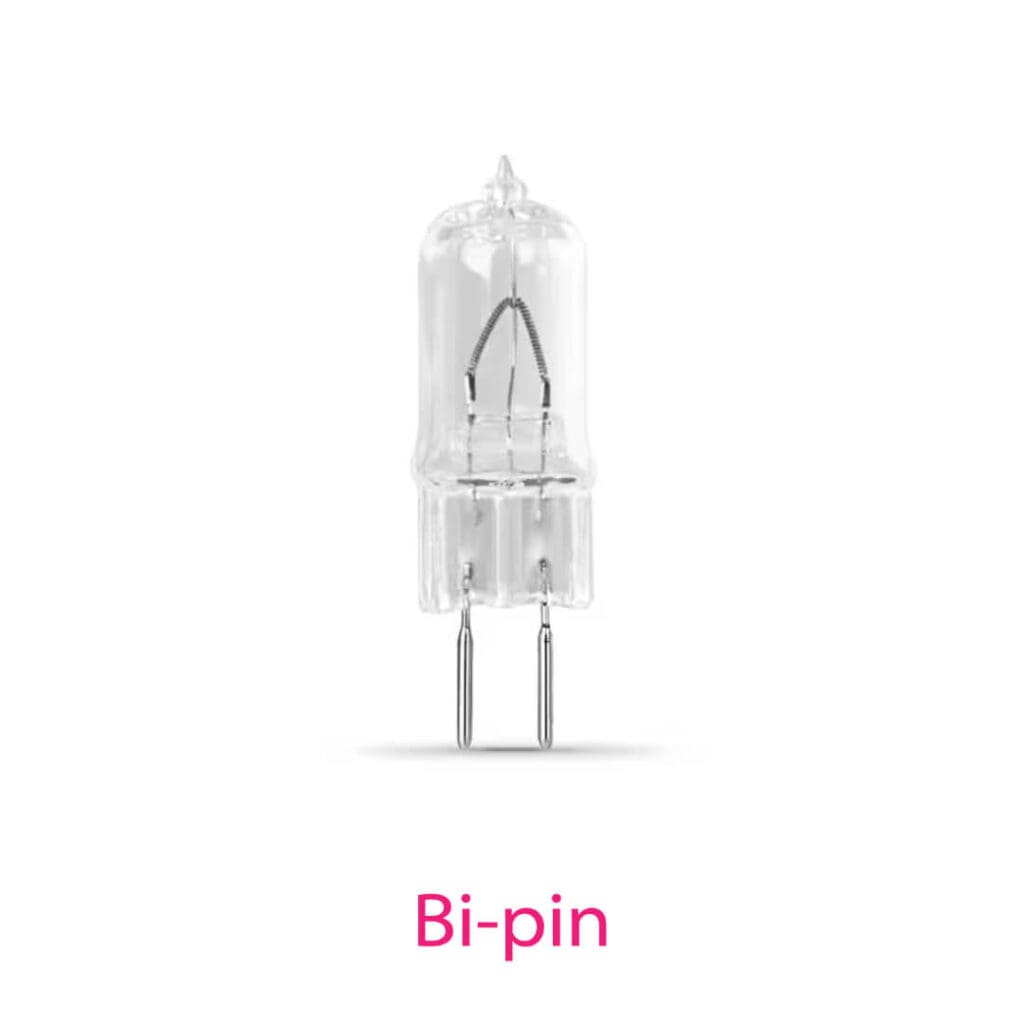
- Bi-pin (GU10, G4, G8, G9, GY6.35, and G13)
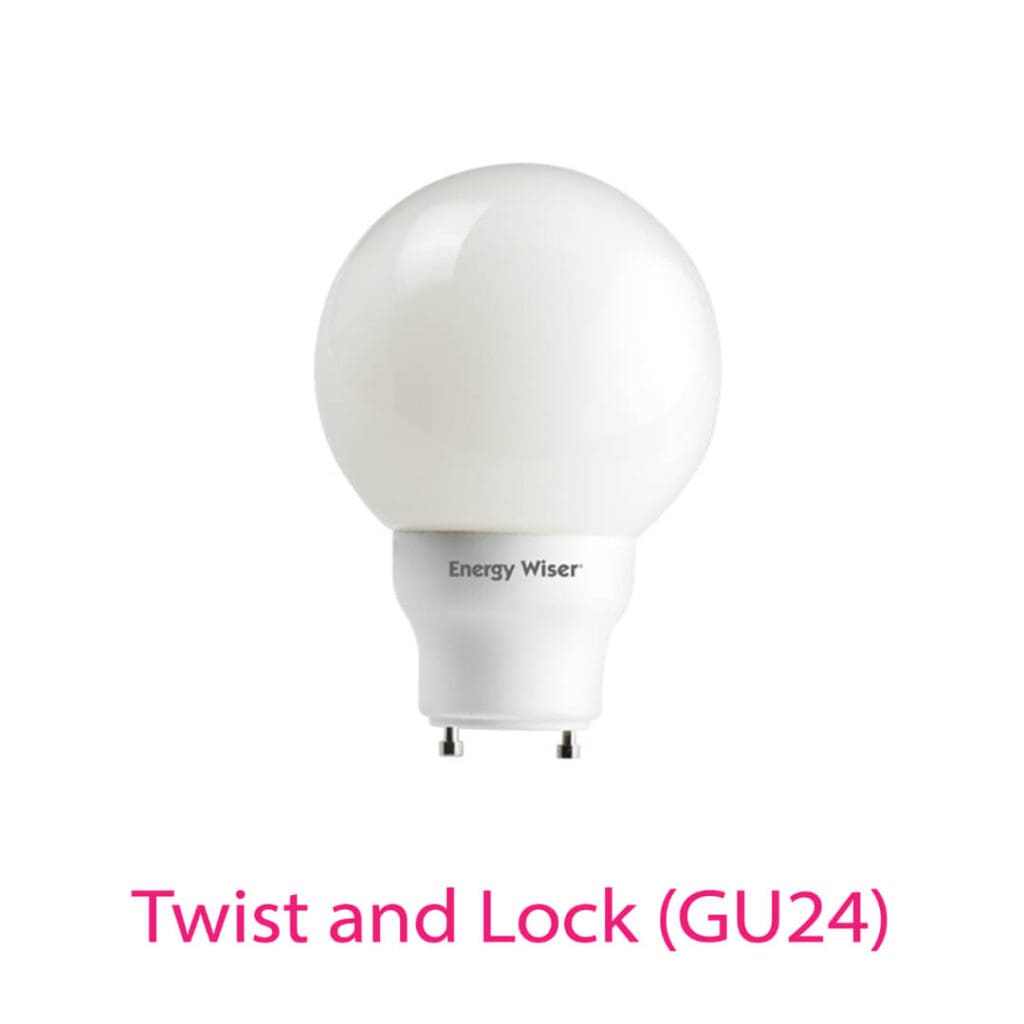
- Twist and Lock (GU24)
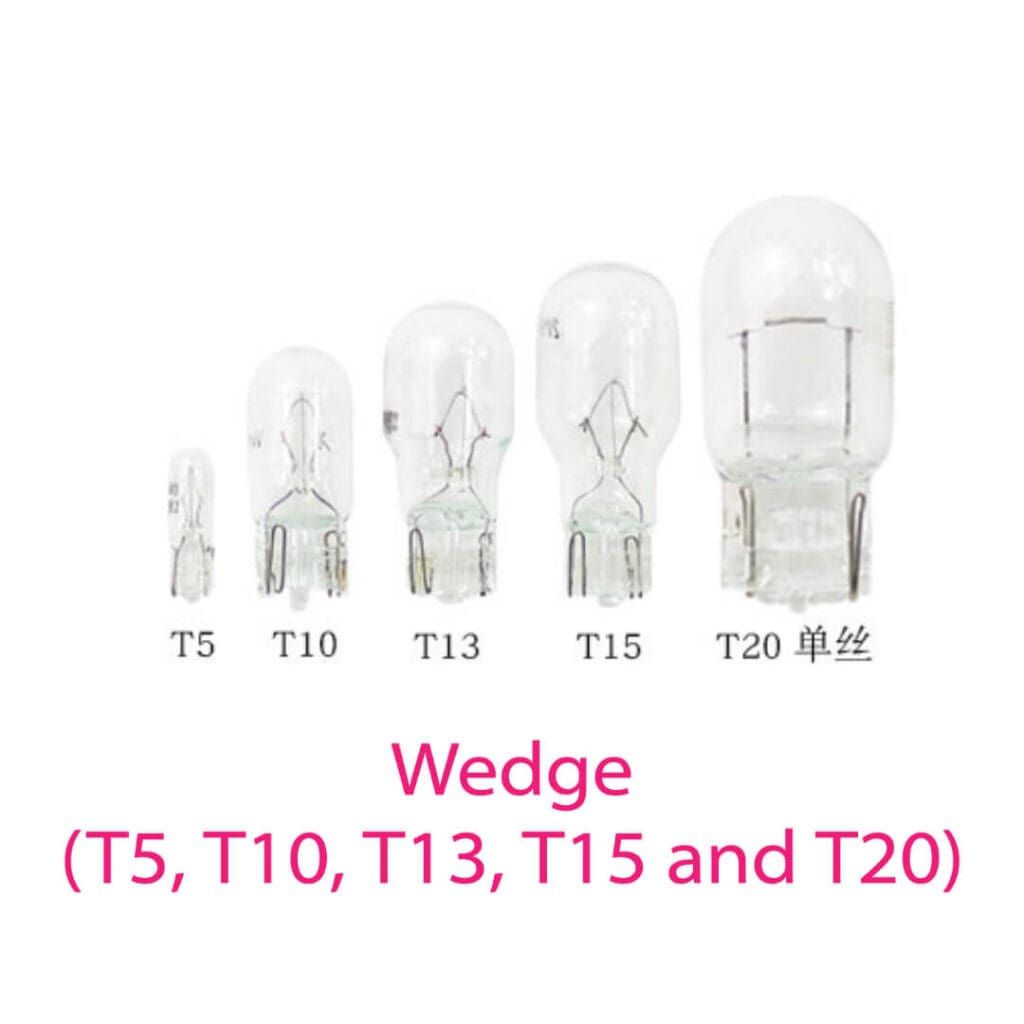
- Wedge (T5, T10, T13, T15 and T20)
Complete Guide To All Standard Lightbulb Base Sizes And The Wattage
With so many lightbulb base sizes in the market, knowing which one to choose can be challenging.
This guide covers all the standard lightbulb base sizes used in the United States and other countries worldwide. The United States, Canada, and other countries will use the UL standard for all lightbulbs and lightbulb sizes.
Some other countries may use a lightbulb that looks similar to what the United States and Canada use, but the lightbulb will have another size number. If you live in the United States and purchasing lightbulbs, you only need to worry about the United States lightbulb sizes.
This is a breakdown of the compatibility and wattage of each type of lightbulb base size:
LIghtbulb Sizes For The United States And The Wattage
The United States and other countries that use UL lightbulb standards use basically as follows
- Candelabra (E12) – Compatible with small chandeliers, nightlights, and some ceiling fans. Wattage ranges from 4-60 watts.
- Intermediate (E17) – Compatible with some ceiling fans and appliances. Wattage ranges from 7-40 watts.
- Medium (E26) – Compatible with most household fixtures. Wattage ranges from 40-150 watts.
- Mogul (E39) – Compatible with high-wattage bulbs and industrial fixtures. Wattage ranges from 150-1000 watts.
Other Lightbulb Sizes And The Wattage
Here are some other lightbulb sizes that are good for you to know about. Many of these are considered specialty lightbulbs as they are used for specific purposes and reasons.
Bayonet Cap (B22 and B15) – Wattage ranges from 7-100 watts.
Bayonet Cap (B22 and B15) is a lightbulb socket with a bayonet mount with two pins that twist and lock into place. B22 and B15 sockets are commonly used in Europe, Australia, and some other regions of the world.
B22 (BC or Bayonet Cap) is the larger of the two types, with a diameter of 22mm. B22 bulbs, such as table lamps, ceiling fixtures, and wall sconces, are commonly used for general lighting applications in homes and businesses.
B15 (also known as SBC or Small Bayonet Cap) is the smaller of the two types, with a diameter of 15mm. B15 bulbs are commonly used in smaller light fixtures, such as chandeliers, decorative lamps, and appliance lighting.
One of the advantages of bayonet cap sockets is that they are easy to install and remove. The twisting and locking mechanism allows bulbs to be securely attached to the socket while allowing easy removal when the bulb needs to be replaced.
It is important to note that B22 and B15 bulbs are not interchangeable with other types of bulbs. If you have a fixture that requires a B22 or B15 bulb, it is important to use a bulb with the same socket type to ensure safe and proper operation.
Bi-pin (GU10, G4, G8, G9, GY6.35, and G13) – Wattage ranges from 10-150 watts.
Bi-pin sockets are used for various halogen, LED, and fluorescent bulbs. Here are some common uses for each of the bi-pin socket types:
GU10: This socket is commonly used for directional LED bulbs, such as track lighting, recessed lighting, and landscape lighting.
G4: This socket is commonly used for small halogen or LED bulbs in desk lamps, under-cabinet lighting, and pendant fixtures.
G8: This socket is commonly used for halogen bulbs in under-cabinet lighting, pendant fixtures, and ceiling fans.
G9: This socket is commonly used for halogen or LED bulbs in bathroom vanity, wall sconces, and pendant fixtures.
GY6.35: This socket is commonly used for halogen bulbs in landscape lighting, under-cabinet lighting, and some desk lamps.
G13: This socket is commonly used for fluorescent bulbs in ceiling fixtures, panel lights, and commercial lighting applications.
It is important to note that the specific use of each bi-pin socket type may vary depending on the application and fixture. It is important to choose a bulb with a compatible base type for your specific fixture to ensure safe and proper operation.
Twist and Lock (GU24) – Wattage ranges from 10-26 watts.
The Twist and Lock (GU24) socket is a type of lightbulb socket that features a bayonet mount with two pins that twist and lock into place. GU24 sockets are used for energy-efficient compact fluorescent bulbs (CFLs) and LED bulbs.
The GU24 socket is designed to be a low-profile, compact socket used in various fixtures, including table lamps, ceiling fixtures, and wall sconces.
One of the advantages of GU24 sockets is that they are more energy-efficient than traditional screw-in sockets. GU24 bulbs have a built-in ballast, eliminating the need for a separate ballast in the fixture. This reduces energy consumption and can help to lower energy bills.
Additionally, GU24 bulbs are often more affordable than other energy-efficient bulbs, making them a cost-effective option for many consumers.
It is important to note that GU24 bulbs are not interchangeable. If you have a fixture that requires a GU24 bulb, it is important to use a bulb with the same socket type to ensure safe and proper operation.
Wedge (T5, T10, and T20) -Wattage ranges from 4-18 watts
Wedge (T5, T10, and T20) has two wires extending from the socket. The wires are positioned at an angle to create a wedge shape, which is why this type of socket is called a wedge socket.
T5, T10, and T20 refer to the size of the wedge socket, with T5 being the smallest and T20 being the largest. Wedge sockets are commonly used in low-voltage lighting applications, such as landscape lighting, automotive lighting, and some types of task lighting.
T5 wedge sockets are commonly used in small accent lighting fixtures, such as picture lights and cabinet lighting.
T10 wedge sockets are commonly used in automotive lighting applications, such as turn signals and parking lights.
T20 wedge sockets are commonly used in landscape lighting fixtures, such as path lights and spotlights.
One of the advantages of wedge sockets is that they are compact and easy to install. The wedge shape of the socket allows for a secure and stable connection with the bulb, while still allowing for easy removal when the bulb needs to be replaced.
It is important to note that wedge sockets are not interchangeable with other types of sockets. If you have a fixture that requires a wedge socket, it is important to use a bulb with the same socket type to ensure safe and proper operation.
Complete Guide How To Check Standard Lightbulb Base Sizes And Compatibility
Choosing the right lightbulb base size ensures compatibility and ensures your proper lighting system functions correctly. Using the wrong lightbulb base size can damage your fixture, reduce brightness, and be a potential safety hazard.
This is why it’s crucial to understand the different types of lightbulb base sizes and their compatibility with various fixtures.
Check The Manufacturer’s Instructions
To ensure compatibility, consult the manufacturer’s instructions for your fixture or lamp base and the recommended bulb size and wattage. Any UL lamps we produce at Mondoro have a sticker that will give the lamp wattage to be used for the lamp.
Check the Lampsocket Information
There should be a wattage sticker on the lamp socket. Manufacturers will put it there, so wattage information can usually be found on the fixture or lamp socket, in the user manual, or on the manufacturer’s website. Following these guidelines is essential to prevent damage to your fixture and ensure safe and adequate lighting.
Use The Correct Lamp Wattage
It is essential to consider the wattage of your lightbulb. Using a bulb with a higher wattage than recommended can lead to overheating, damaging your fixture, or even starting a fire. Each lamp fixture or socket has been tested for a specific wattage, so use the wattage listed on the lamp fixture or socket.
Always choose a bulb with the recommended wattage for your fixture to ensure your lamp’s or lighting fixture’s safety and proper functioning.
Choosing the right lightbulb base size and wattage is essential for ensuring the compatibility and safety of your lighting system. By consulting the manufacturer’s instructions or using online resources, you can find the correct bulb for your fixture and ensure proper functioning and safety.
Mondoro Can Help You Manufacture UL Standard Portables Lamps In Asia
If you need UL-listed lamp manufacturing, Mondoro is here to help. As a leading manufacturer, we specialize in creating high-quality UL lamps that meet safety and performance standards. Contact us today to learn more about how we can meet your manufacturing needs.
If you want to see how Mondoro can help you with your Ul Certified lamp needs, we would love to talk to you about how we can help you.
Find out more about how Mondoro can help you create, develop, and manufacture excellent home decor and furniture products – don’t hesitate to contact me, Anita. Check out my email by clicking here or become a part of our community and join our newsletter by clicking here.
Mondoro gives out a FREE Lookbook to anyone interested. You can receive a copy of our latest Lookbook by clicking here.
Listen to our Podcast called Global Trade Gal. You can find it on all major podcast platforms. Try out listening to one of our podcasts by clicking here.
Subscribe to our Mondoro Company Limited YouTube Channel with great videos and information by clicking here.
Frequently Asked Questions On Lightbulb Base Sizes
What are lightbulb base sizes?
A lightbulb base size refers to the type of connector at the bottom of a lightbulb that attaches to a fixture or socket.
What are the most common lightbulb base sizes?
The most common lightbulb base sizes include E26 (standard medium screw base), E12 (candelabra screw base), and GU10 (twist and lock base).
What is the difference between E26 and E27 light bulb bases?
There is no significant difference between E26 and E27 light bulb bases. They have the same diameter (26mm) and can be used interchangeably.
What is an E12 light bulb base used for?
E12 light bulb bases are commonly used for small decorative light fixtures, such as chandeliers, sconces, and candle lamps.
Can I use a lightbulb with a different base size than my fixture or socket?
No, you should always use a lightbulb with the same base size as your fixture or socket. Using a lightbulb with a different base size can cause electrical problems and may be a fire hazard.
What should I do if I have a fixture with a non-standard base size?
If you have a fixture with a non-standard base size, you should consult with a professional electrician or lighting specialist to find a compatible lightbulb.
Can I replace a lightbulb with a different wattage than the original bulb?
You should always replace a lightbulb with the same wattage as the original bulb or the maximum wattage recommended by the fixture or socket. Using a higher-wattage bulb can cause electrical problems and may be a fire hazard.
Can I use LED bulbs in fixtures that originally used incandescent bulbs?
Yes, LED bulbs can be used in fixtures that originally used incandescent bulbs as long as the base size and wattage are compatible. LED bulbs are more energy-efficient and have a longer lifespan than incandescent bulbs.
What is a bayonet light bulb base?
A bayonet base is a type of lightbulb base that features two prongs that twist and lock into a fixture or socket. Bayonet bases are commonly used in Europe.
What is a bi-pin light bulb base?
A bi-pin base is a type of lightbulb base that features two small pins that plug into a fixture or socket. Bi-pin bases are commonly used for halogen and LED lightbulbs.
Related Content
What Is The Difference Between LED, CFL, And Incandescent Light Bulbs?
There can be a little bit of confusion about the difference between an LED or incandescent bulb and which light bulb is the most energy-efficient.
You can discover more by reading What Is The Difference Between LED, CFL, and Incandescent Light Bulbs? by clicking here.
What Are The Standard Light Bulb Base Socket Types And Sizes?
It can get quite confusing when considering different types of light bulb socket bases. Many people get confused about the different numbers used for each light bulb base and their meanings.
You can discover more by reading our blog, What are the Standard Light Bulb Base Socket Types and Sizes? by clicking here.
Meaning Of The Incandescent Wattage Sticker On Your Lamp Socket
The incandescent wattage warning sticker on your lamp socket helps inform consumers what wattage lightbulb they can safely use for their lamp. The sticker also indicates that the lamp has been tested up to the UL or ETL standard for the amount of wattage listed.
You can discover more by reading our blog Meaning Of The Incandescent Wattage Sticker On Your Lamp Socket by clicking here.

